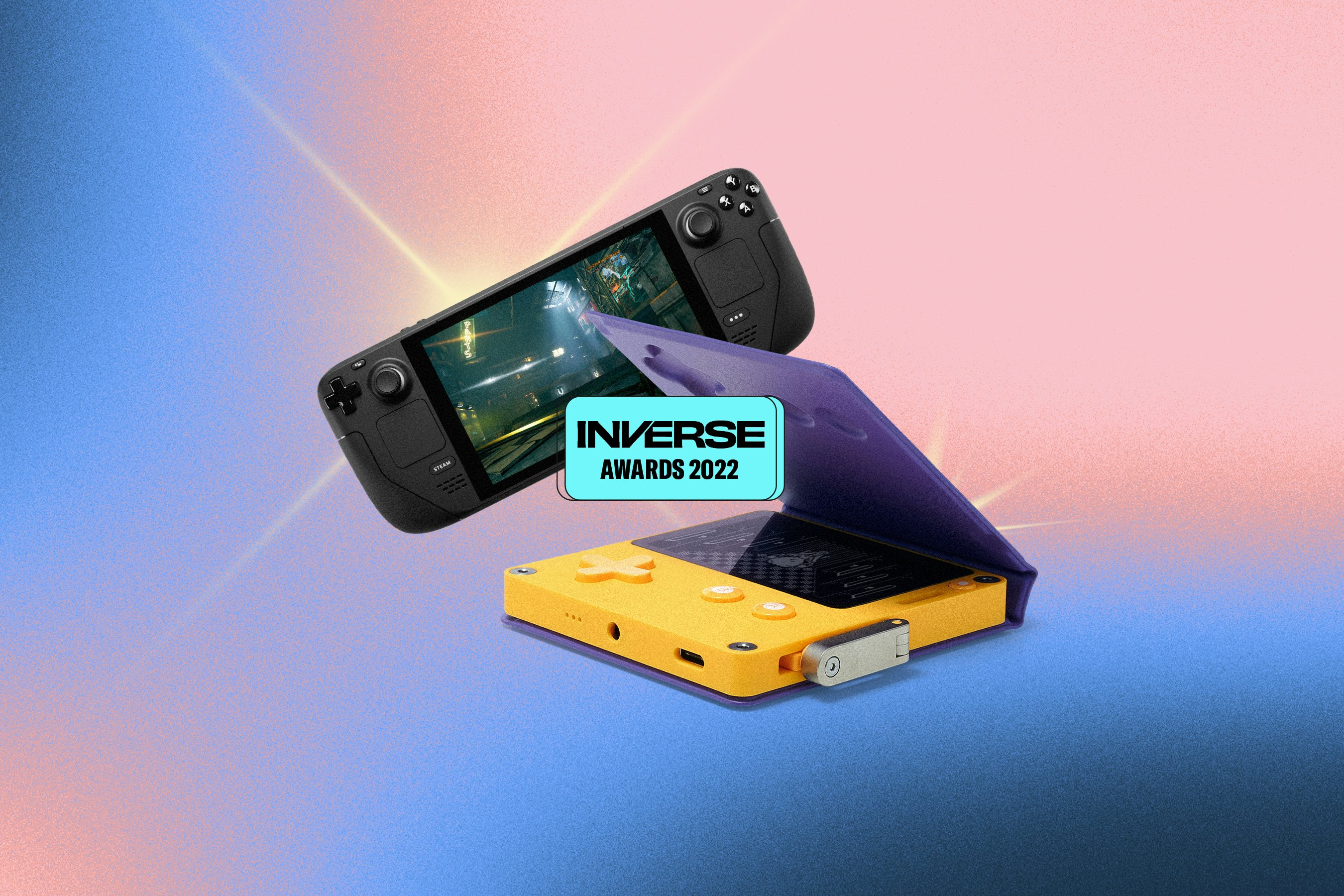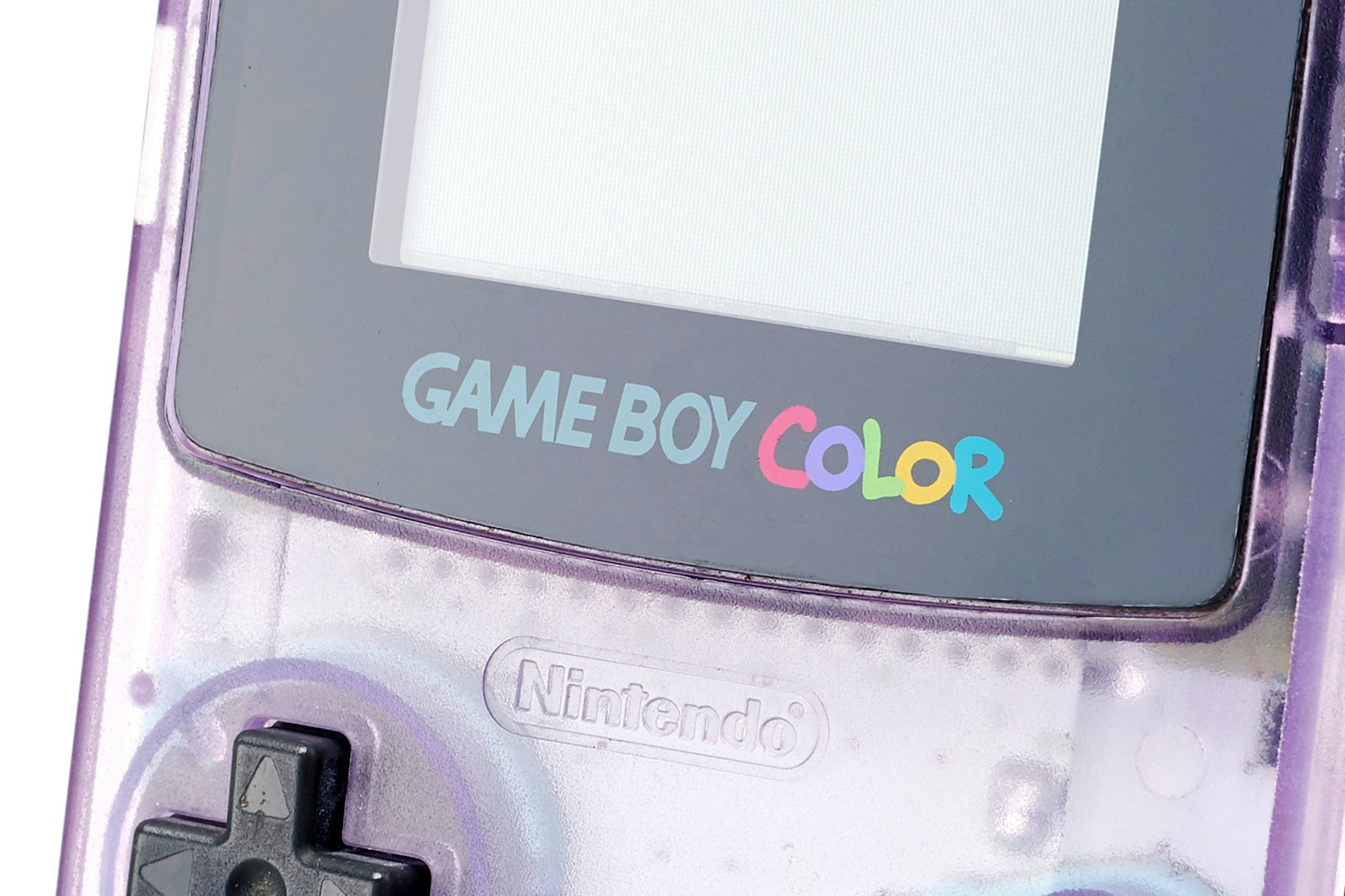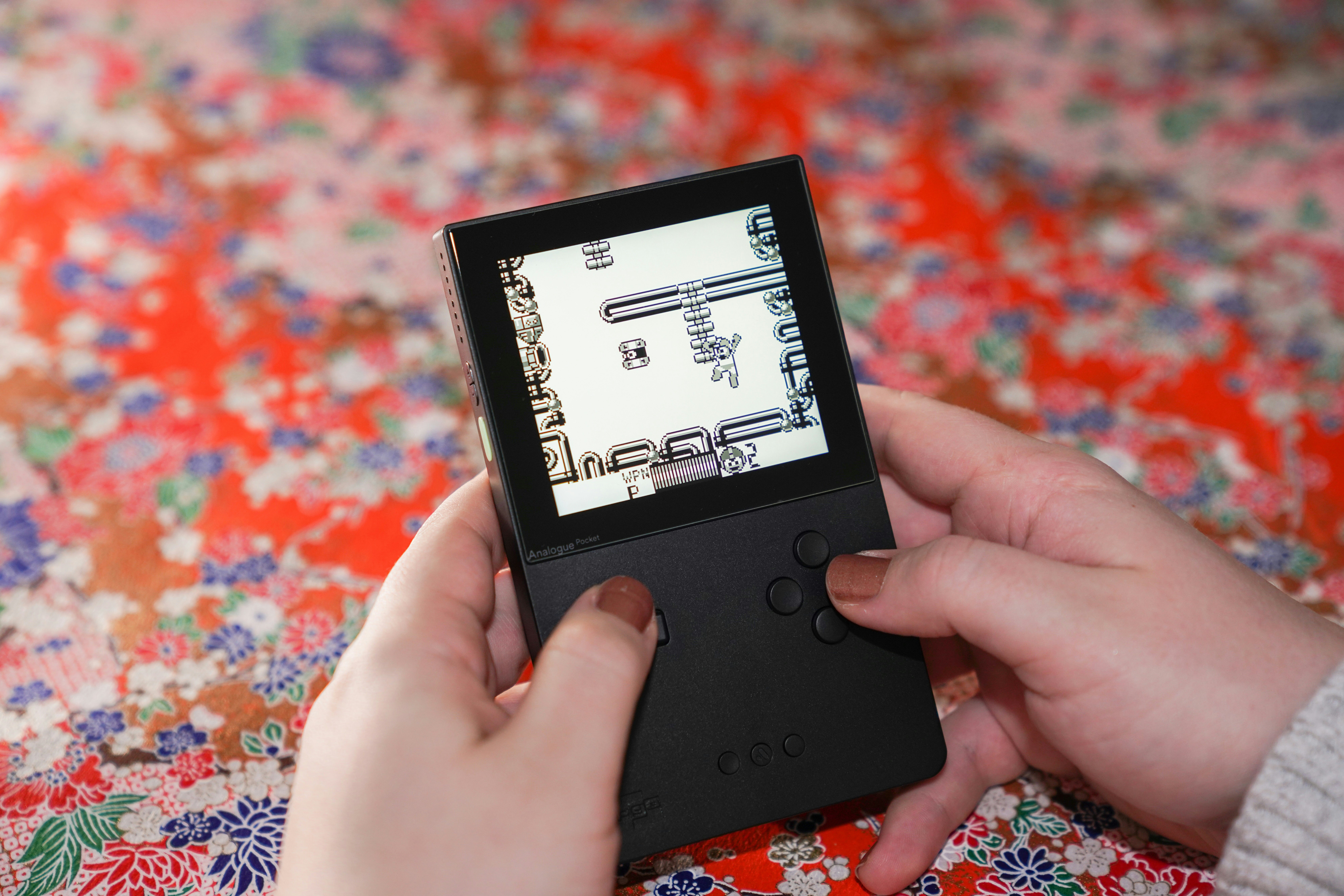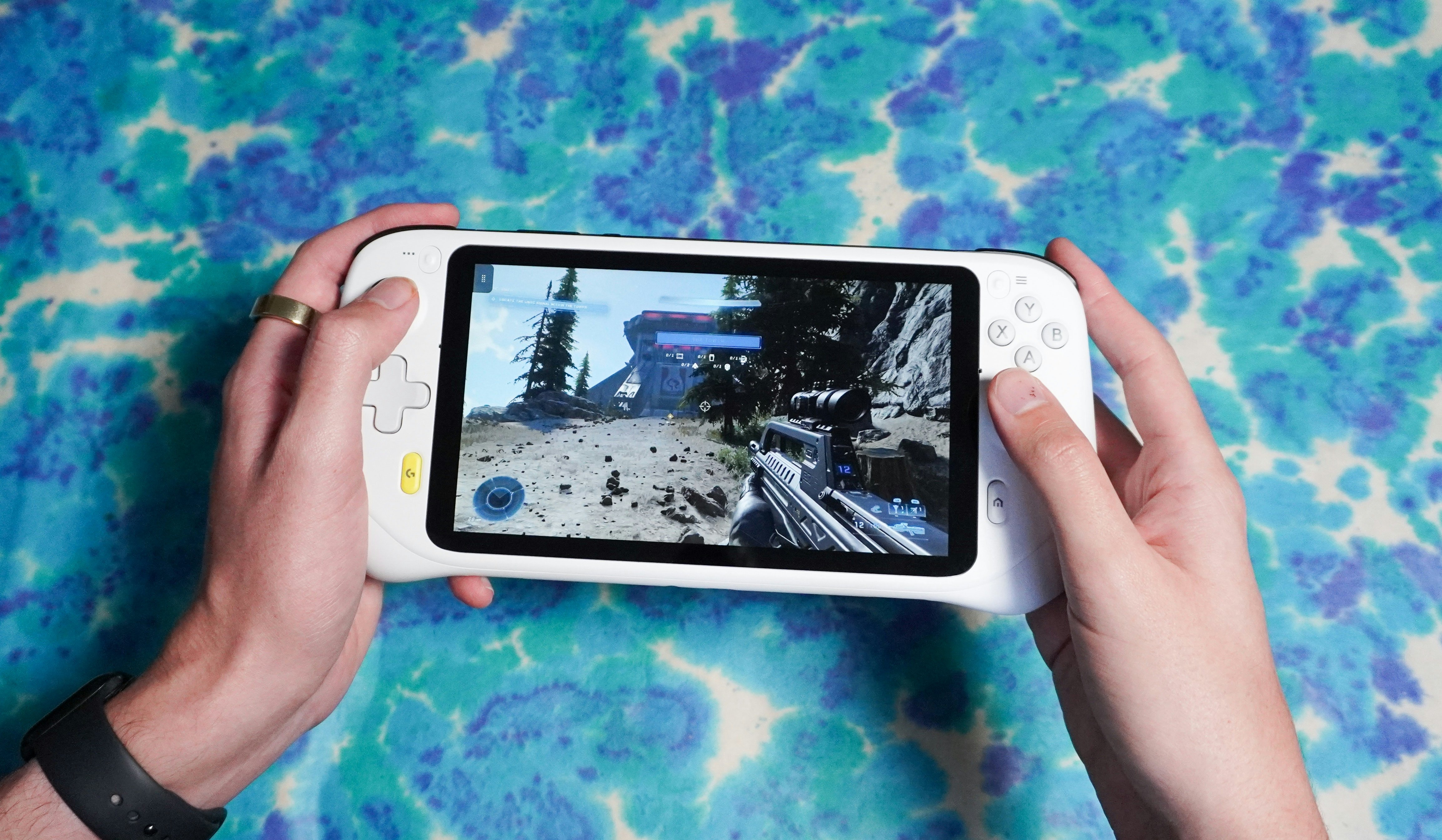
Consoles and PCs typically dominate the gaming scene, but 2022 was, without question, the year of the handheld.
More than any unexpected turn in the tech landscape — the metaverse, gigantic mergers, and surprising developments in artificial intelligence — handheld game consoles were top of mind for techies and gamers alike — and for good reason. Whether it was the launch of the Steam Deck, the Playdate, or the neverending stream of handheld and retro emulation content uploaded to YouTube, the landscape of portable gaming hasn't felt this vast and vibrant since the Nintendo DS / PlayStation Portable (PSP) era.
Thanks to the Nintendo Switch and the popularity of mobile games, “handheld” gaming never quite went away, even after the heyday of the DS and PSP. Nintendo continues to sell Switches hand over fist — in November, the console/handheld hybrid hit 114 million total lifetime units sold — and you could credibly say one of the largest mergers in the history of video games was driven in part by Microsoft’s desire to own Candy Crush.
But 2022’s general air of excitement around handhelds wasn’t centered on Sony, Microsoft, or even Nintendo. Handheld gaming growth largely came from less mainstream third parties and startup companies. Valve, which has dabbled in hardware before with Steam Machines and the Index VR system, finally broke through with the Steam Deck. Compelling and popular alternative PCs from Ayaneo and Onexplayer soon followed. The Pocket, the handheld emulation hardware from the experts at Analogue, started shipping devices to customers after years of wait time. And Panic, maker of hit apps like Transmit and Nova and publisher of well-received games like Untitled Goose Game and Firewatch, released the quirky Playdate.
Through these handhelds — some still small, but many comfortably dropping any sense of real pocketability — many of us rediscovered what we always loved about portable game consoles: their convenience, the nostalgia for the ways we used to play, and the beauty of a device that’s as much an aesthetic object as a functional one. But the explosion of the handheld gaming scene has also made it clearer than ever that taste has greatly diverged from the Nintendo-dominated days of the past.
Convenience

The idea of being able to take a game with you on the go has always been exciting. When Nintendo followed up the Game & Watch and the NES with the Game Boy, it went on to sell over 118 million units worldwide. To date, the Game Boy is the third best-selling game system (handheld or not), just behind the Nintendo DS and PlayStation 2, according to VGChartz. People love portable gaming.
The Game Boy's astronomical success — extended with the Game Boy Pocket, Color, and Advance (and, of course, Pokémon) — fueled multiple handheld "wars" that made portable gaming even more exciting than it was. Nintendo’s handheld triumphed over Sega’s Game Gear, and the Nintendo DS later destroyed Sony’s PSP.
But after the Nintendo 3DS toppled Sony’s PlayStation Vita, handhelds largely took a backseat to consoles, PC gaming, and the popularity of smartphone and tablet games capable of console-like graphics. The Switch renewed interest in handheld gaming by offering something closer to the home console experience on the go, but over time, aging hardware left a gaping hole to be filled. Sony, the last real rival to Nintendo in handhelds, threw in the towel after the PS Vita flop with no plans to return. “PlayStation Vita was brilliant in many ways, and the actual gaming experience was great, but clearly it’s a business that we’re no longer in now,” Sony’s president and CEO of Sony Interactive Entertainment Jim Ryan told IGN in 2019.

Nobody could have predicted Valve would have been the company to do the filling. Although it was announced in 2021, almost overnight, Valve's Steam Deck generated a new wave of excitement by going beyond the Switch and into territory few had successfully gone before: making PC games playable on the go. Handheld PCs had existed previously, but the Steam Deck promised the lightweight benefits of Linux without all the work of porting games off Windows — thanks to its Proton compatibility layer. We could argue which was more significant to enable the creation of similar handheld PCs — the Steam Deck as a polished proof-of-concept or the AMD Zen 2 CPU and RDNA 2 GPU architectures — but at the end of the day, Valve created an all-around great device, which was all competitors needed to jump on the bandwagon.
The dynamics at play in 2022 — the third year of a global pandemic with the latest installment of whatever changes are happening to the way we live and work — have undoubtedly contributed to the upward trend for handhelds, too.
“Handheld devices likely grew in popularity because as many of us shifted to telework, the last thing we wanted was to spend more time in front of a monitor.”
Russ Crandall, a YouTube creator behind the popular emulation channel Retro Game Corps suggested as much when I reached out to him over email. “Handheld devices likely grew in popularity because as many of us shifted to telework, the last thing we wanted was to spend more time in front of a monitor,” Crandall explains. “The idea of playing games anywhere in that house that wasn’t at your desk was even more appealing.”
For Crandall, who devotes a significant amount of time reviewing new handheld devices and their ability to emulate old handheld (and home console) games, a device that can play a little bit of everything, like the Steam Deck, Ayaneo 2, or the dozens of Android handhelds that come out every year, is critical.
“It’s kind of a marvel to have all of those games in the palm of your hand,” Crandall says.
Nostalgia

I have many memories tangled up in my first Nintendo DS, the snap of its lid, the fiddliness of its stylus slot, and the several games I lost cases for. Handheld consoles were many people’s first exposure to video games because they were often the more affordable and approachable option. It’s only natural there's so much nostalgia for them.
Take the cheese-colored Playdate with its hand crank and 1-bit black-and-white display. Even if you know nothing about its creation, it looks like an odd prototype Nintendo might have lying around a lab somewhere. The device started as an anniversary gift for Panic’s loyal software customers, an initially modest idea even if the decision to make it was out of character.
“The goal was to do something we hadn’t done before,” Cabel Sasser, Panic’s co-founder, said in a development blog for the Playdate. “So that is why we ended up deciding to do hardware of all things, for a software company.”

The Playdate started its days as a clock, but as soon as a black-and-white LCD screen came into the picture, the Game & Watch series, Nintendo’s handheld toys that functioned as electronic clocks paired with a single game, became a sort of North Star for Panic. Years later, the Playdate is now a full-on handheld that only shares surface-level similarities to Nintendo’s device. But it still trades on that familiarity.
As an owner of the Playdate, I can assure you that the handheld is Certified Fresh. Its old-school-inspired hardware and software are refreshingly nostalgic at a time when everyone has a powerful smartphone that can play console-quality titles like Fortnite or Genshin Impact. Touchscreen controls on mobile are pretty similar, with little distinction between many of the most popular games on iPhone and Android. The Playdate went in the complete opposite direction, simplifying controls and almost “demaking” games. It's like a Fujifilm Instax instant camera — old and familiar like a Polaroid but modernized in some ways to draw in a new crowd. And it really works.
Aesthetic choices

Like many pieces of hardware in our app-driven world, our relationship with handhelds has fundamentally changed as the devices we use every day have. We focus on customization and aesthetic appeal just as much as the actual games these devices can play. It’s something that’s probably been true as long as there have been colorful Game Boys to gawk at, but especially the case now when handhelds are frequently a custom, modded affair.
“There’s the different color variations, which is a pretty obvious way to have a personable connection to whatever device you’re playing,” Elliot Coll, the “Dr. Frankenstein” responsible for The Retro Future YouTube channel, explains. “But at a baseline, they have to be appealing in the sense that it's going to be something cool that you love just physically being on your person.”
Svelte devices like phones and tablets provide little opportunity for expression — they’re just glass screens. You can slap on a case or add a controller accessory such as a BackBone One or Kishi V2 to make the touchscreen devices more personal, but you can’t configure them beyond that in the way you can a handheld. Especially handhelds designed to be modded.

There are massive Reddit communities for people to show off their modded handhelds or share techniques on how to hack and customize them. It’s not just basic shell replacements — r/gameboymods and r/gameboymacro, for example, are filled with Game Boys spliced with modern features like higher-resolution IPS panels, rechargeable batteries with USB-C, and upgraded speakers. As devices with myriad tactile buttons and inputs, handhelds allow for hardware modifications that are both more personal visually, but also functionally.
The Steam Deck itself is fairly repairable and moddable from the start. Replacement parts and instruction manuals on performing repairs are available through iFixit. You can upgrade a cheaper Steam Deck with the matte anti-glare display reserved for Valve’s most expensive model without too much fuss. Even more adventurous customizations are only a Google away, but the point is the device is as adaptable as any other PC as long as you take its size into account.
Fewer distractions

The attraction to design isn’t just about looks either, it extends to how handhelds work — and sometimes what they can’t do. “There is no more depth to the device other than the one game. You are in that game in that moment,” Coll says. That a DS or any older handheld can only play one game at a time is an advantage. For the short time you’re playing your game, the handheld device is that game. There’s no opportunity for choice paralysis. And for the most part, new handhelds, unlike our do-every-thing smartphones, aren't constantly buzzing with notifications to steal away your attention from your game.
Jesper Kouthoofd, the head of design and CEO of Teenage Engineering, who led hardware design for the Playdate and has made handhelds (albeit audio-based ones like the Street Fighter Pocket Operator), described this simultaneous advantage and disadvantage of a handheld a bit differently in Panic’s development blog:
“A gaming device to me is almost the same as a musical instrument. It’s about zero latency, muscle memory, and you need to feel that you are in constant control of everything that happens… it’s very important for the whole experience and the joy of being, you know, like in control and using your hands.”
Doing less can be a virtue. The Playdate shows restraint in its controls and its display. The Analogue Pocket, officially, can only play original Game Boy cartridges (and other carts with an adapter). The Steam Deck does a little bit of everything by comparison — it’s essentially a PC in a Switch-like form factor and can even become a proper desktop with a dock, mouse, and keyboard — but it also runs Linux, which limits its reach in some ways that Windows-based gaming PCs will never have to deal with.
With so much to distract us these days — texting, social media, Reddit holes, etc. — handheld gaming and its more focused experience is a pleasant reprieve from our connected reality.
More gaming for everyone

Based on the qualities that drew people to handheld devices in 2022, it’s hard to say whether the interest will stick around. Valve and Panic intend to support their devices for now, and Valve plans on releasing follow-ups to the Steam Deck. Nintendo will eventually make another Switch — maybe the 4K "Switch Pro” everyone is pining for. The hobbyist interest in old Game Boys will last as long as the cottage industry of third-party parts sticks around.
Could other major console manufacturers get in the game? It’s certainly possible. Microsoft’s focus on Xbox Game Pass and cloud streaming mean that if a device can connect to the internet and run basic web apps, there’s a good chance the company will back it with its subscription services. If you squint, the dual-screen Surface Duo is Microsoft's portable Xbox. Logitech’s G Cloud Gaming Handheld, a device focused on providing a great Xbox Cloud Gaming experience, represents the other part of Microsoft’s strategy. Sony failed with the PS Vita but given the company’s openness to putting former PlayStation exclusives on PC, its efforts to turn Playstation Plus into a Game Pass competitor, and a recent team-up with BackBone on a PlayStation-themed phone controller, maybe returning with a Steam Deck-like handheld is not totally out of the question if the space remains popular.
To put it simply, Nintendo has a lot more company.
What’s clear looking back at this past year, though, is that there is an audience for handhelds — one that’s growing larger thanks to enthusiasts sharing their hobby online — in a way there hasn’t been since at least the Switch launched. But they likely won’t be looking for the Game Boys, PSPs, and DSs of the past. The “purity” of that original vision has been supplanted by the raw power of the cloud and new chips. Emulation and refurbished older hardware will and should stick around, but the handhelds of the future will do a lot more than anything we played in the old days. To put it simply, Nintendo has a lot more company now. And as a whole, the expansion of handheld gaming — be it PC titles on the go or the resurgence of retro gaming through portable emulators — is a much-needed step toward making video games available to everyone.
INVERSE celebrates the best of the best in entertainment, gaming, science, and technology of 2022. Go to the INVERSE Awards hub.







